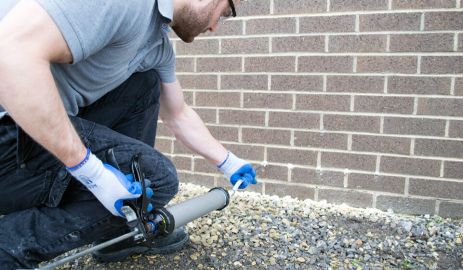
How To Avoid Damp Proofing And Mould
Discoloration on the walls is not so nice, especially if it’s your house. If you notice those black patches on your walls you instantly know that there’s a dampening issue. This is an issue that needs your immediate attention otherwise it can cause serious damage to your walls and equally your health. So, how to fight the penetrating damp?
Well, damp proofing is one of the proven ways to protect your walls from the deep seepage and the slow destruction of the house. Chronic illness and breathing disorders are some of the common medical conditions that may arise within a house that’s affected with mould and dampness. Getting damp proofing services can be one of the smartest approaches at this time. So, today we have some tips on how to get rid of the damp.
Regular maintenance of the walls (exterior and interior), the roof, foundations and the window of your house is the primary step towards the wellbeing of your property. This will help maintain the health of the property for long term without any troubles. Taking care of the structure will ensure that the walls are protected from any dampening or appearance of moulds.
Whether it’s the penetrating damp that came through the walls or the rising damp where it came through the ground you must take a few careful steps to get rid of the dampening and the mould. If you notice rising damp that usually arises due to a broken DPC or maybe it lacks one, take precautions with immediate effect. Moreover, if the water seeps through the broken DPC due to clocked air bricks or heap of mud, you can simply remove the earth away from the walls using a shovel ensuring that there is mud deposition again.
A damaged DPC on the other hand, can be easily repaired by injecting a chemical compound at the bottom of the wall after you have drilled a long queue of holes. Make sure that these holes are drilled at a distance of 5-inches using a special tool. The chemical seeps through the DPC level and settles there creating a blockage against the rising damp.
For penetrating damp that creates patches and damp mould over a height of 5 feet on your walls, shows that the exterior wall is no more weatherproof and are now allowing water seepage inside the wall. This will then spread inside the house and cause damage and health hazards. Contact a trusted damp proofing service in this case and get the exterior wall coated with damp-proofing. These are available in clear as well as in colored varieties.
So, before even you reach the damp-proofing services you can take a few measures using DIY tips to remove mould. Cleaning the damp of the walls regularly, allowing enough fresh air inside the house with better ventilation, using a good quality mould cleaner instead of bleach, using a dehumidifier by renting or buying one, changing the bedding, carpets or soft furnishing quite often, or sealing the damaged tiles are some of the best ways to avoid damp and mould to the max.
However, if it’s a serious condition that needs immediate attention, getting a trusted service like damp proofing is the best way out.


The best way to avoid damp proofing and mold growth is through preventive measures. This involves the use of effective moisture control strategies, such as ensuring adequate ventilation in areas prone to moisture accumulation and installing a damp proof course or damp-proof membrane with appropriate thermal insulation properties, when necessary. Using materials with high water resistance for construction and maintaining proper drainage systems, particularly during wet weather conditions, can be useful in preventing the proliferation of mold. Awesome post. I am glad that you shared this useful info with us. Thanks.